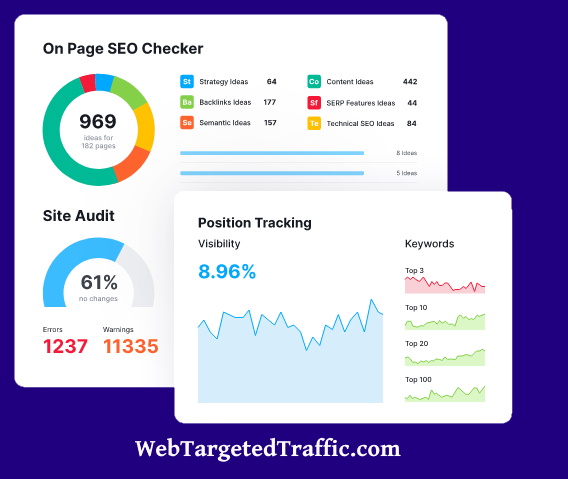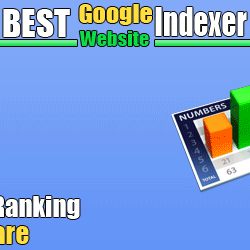Your competitors can be your greatest asset if you allow them to be. You can tap into their strategies through competitor analysis to see what’s working for them and what isn’t. These insights can help you reverse-engineer their success to beat them.
Let’s take a look at the step-by-step process to leverage SEO competitor analysis to improve your search result rankings.
Table of Contents
Stage 1: Make an Accurate List of Your Competitors
Before you start a fight, you will need to choose your opponents first. And you will need to choose them correctly.
Once you have identified your keywords, search for them on Google and find out which sites rank in the top 10. Repeat the process for all of your major keywords. You might find that a few particular sites come up in almost all your searches. These are the sites you’ll need to add to your list of competitors.
Keep in mind that your competitors are not just other businesses that offer the same type of products or services you provide. They can be any website that competes with you for your target keywords. For instance, if one of your target keywords is “jewelry stores in Tampa, Florida,” these top-ranking sites would be some of your competitors.
How do you know if you’ve hit the mark or not?
Simple: a wrong choice will cause you to race against the guys who aren’t even chipping away at your target audience. Meanwhile, your true competitors will rake in money without even knowing you exist.
Choose your battles wisely, or you’ll waste your time and resources!
When you check who ranks highest for your desired keywords, don’t be in a hurry to add every website on Page 1 in your competitor list. There are other criteria that cannot be exposed through a manual search for one or two keywords.
You will need to comb through all the high-ranking sites to find the ones that really stand in the way of your goals. And that’s a lot of work.
Such tasks are best left to automated tools designed specifically for SEO competitor research. That’s where WebCEO comes in. Rev up the WebCEO Dangerous Competitors tool and click on Settings.
- Open the Keywords tab and type in the keywords you want to rank for. More keywords will produce a more accurate report.
- Then open the Search engines tab. Add the search engines with specified locations to the list. You can also set the depth of SERPs to scan if you want.
- Click Save.
The tool will begin scanning. Once it’s finished, it will generate a table with competitor sites that have ranked well for the entire set of keywords you checked.
Your own website will be shown there, too, helping you compare how well you are doing against your opponents.
What criteria should you look at?
- Ranked keywords in search results. Remember those keywords you input earlier in the Settings? This column shows how many of them help each competitor website rank high.
- Average ranking position. The same website may rank differently for different keywords. This column displays the competing websites’ average ranking positions for the keywords you’ve selected.
- Alexa global traffic rank. This value signifies how much traffic a website receives daily; the lower the number, the more traffic it gets. As the name suggests, WebCEO draws this information from Alexa.
Choose the websites that outperform yours in those departments. You should also double-check and visit the websites competing with you for your set of keywords in order to make sure they actually share a niche with you.
Now that you have your list of competitors, it’s time for the next stage of the plan: analysis.
Stage 2: Analyze Your Competitors’ SEO Strengths & Weaknesses
You could end your preparations here and venture on your hopeless crusade right away. But there’s more to SEO competitive analysis, and there’s more you could do to sharpen your edge. Go all the way and don’t take any half-measures.
The next step is a thorough analysis of your competitors’ websites.
What can you gain from that?
As it happens, there’s plenty you can find and use to your advantage. Let’s look closer at each point.
Keywords
Everything in SEO starts with keyword research. There’s no other way.
The first step is to identify keywords that you can realistically target. The key word here (pun intended) is “realistically.” For instance, if you own a jewelry store, you may want to rank for the seed keyword “jewelry.” Just search for the seed keyword in Google to find your top-ranking competitors. However, unless your brand has the potential to compete with heavyweights like Tiffany, the possibility of ranking for this keyword is next to none.
Therefore, you need to identify hypertargeted, long-tail keywords with high search volumes and low competition. These key phrases are more specific to a particular niche or location.
You can use Moz’s Keyword Explorer to discover high-value keywords and prioritize them by search volume and difficulty score. This tool shows you which domains are ranking for specific keywords and helps you build lists of high-quality keywords that you should target.
Most SEO tools let you scan your competitors’ sites and find out the keywords they’re optimized for. What can you do with this information?
Keywords can be a website’s strength, but they can also be its weak point – depending on how efficiently they are used.
If your competitor doesn’t rank well enough for some of their keywords, you could attempt to do a better job by using them yourself.
Simply put:
- If a competitor ranks well for keyword X, it’s a sign that it won’t be easy to outrank them for X.
- If a competitor ranks poorly for keyword Y, try using Y on your own site and rank better for it.
WebCEO’s Dangerous Competitors tool has already told you how well your competitors are ranking for your own keywords. Now it’s time for a different tool to take the stage: Spy on Competitors in the Keyword Research Tool.
Type in the website’s URL and click Search. The tool will display a table of keywords used on the website.
Tick as many checkboxes as you want, then click Assign Tags to mark the selected keywords with a tag of your choice (I’d recommend using the competitor website names).
Repeat the process for the other sites in your list.
Keywords chosen in this manner will be automatically added to your own keyword basket, and since they are tagged, you’ll be easily able to quickly find them and remove them later if you want. But for now, open the Competitor Rankings by Keyword report.
Click on Settings. In the Keywords tab, click on the All Tags dropdown menu and choose the tag you assigned earlier. All of the selected competitor keywords will be displayed; check their rank positions.
Then open the Competitors tab and type in your competitors’ URLs. As a finishing touch, you can visit the Search Engines tab to specify where you want to check their rankings from.
Press Save. The tool will show competitor rankings for the chosen keywords. With this, you’ll be able to see who doesn’t rank for some even though they’d probably like to. Try to exploit those “weaknesses” when you optimize your own site.
Keyword density
This gives you an idea of how aggressive you have to be with keyword placement. You can use the keyword density analyzer in SEMrush to find the density of your competitors’ keywords. All you need to do is enter the URL of the webpage you want to assess.
Check out the density for your target keyword. For instance, if your target keyword is “watches giftware,” you can find that your competitor has used it three times on that particular page.
Repeat this process for all the competitors on your list. Find the average keyword density; this will give you an idea of the number of times to use a particular keyword on a page.
Metadata
The next step would be to analyze the metadata your competitors use. Here are a few factors to look out for: Are they using LSI keywords? Have they used meta descriptions on their pages and alt text on their images? If any of these are lacking, then you stand a chance to outrank them by completing all of this information on your webpages.
Backlinks
There are two big reasons to pursue backlinks: to drive extra user traffic from other websites and to show the search engines that your website deserves a high-ranking position.
You want to make sure your backlinks aren’t spammy and come from reputable sources. Finding these sources can be a major pain, but you can alleviate it by checking who links to your competitors.
If they are ahead of you, they must’ve collected plenty of high-quality backlinks, right?
WebCEO offers two ways to look up your competitors’ link profiles. The first one is to create a project for a competitor website:
Then, use the Backlink Quality Check tool. Open the Linking Domains tab to see the list of domains linking to your competitor, or the Backlinks tab to see the list of individual linking pages.
The other way involves using the Competitor Backlink Spy tool. Add up to 10 competitor websites in the Settings and click Save. The tool will generate a table of webpages linking to you and competitors.
Find backlink candidates among the pages that are marked in the competitors’ columns, but unmarked in yours. The table is sorted by default to show the backlinks your competitors share with each other.
You can click on the top of other columns to sort, for instance, by the domain name authority of the backlinks at least one of your competitors has.
Brand Mentions
Unlinked mentions aren’t as powerful as backlinks, but they perform a similar role: strengthening a website’s online presence.
Note that “strengthening” doesn’t necessarily mean “improving.” If somebody says bad things about your site, it becomes better known, but not in a good way – as opposed to staying obscure.
Make sure to behave and earn a good reputation from positive mentions! Your competitors most likely have.
Monitoring your own online mentions helps you manage your reputation.
How does tracking mentions of your competitors help you? Simple: keeping an ear to the ground gives you opportunities to get mentioned on the same websites as them.
One tool that comes to mind is Google Alerts. Its detailed settings will help you catch the most relevant mentions you need from any part of the world. The results will be sent to your email on a regular basis.
Stage 3: Analyze their content.
Now you have a clear idea of who your competitors are, what keywords they rank for, their backlink profiles, keyword density and meta information. The next thing you need to analyze is their content and social media marketing strategies.
High content quality is vital for Google to rank your site well. This includes the usefulness of the information, factual correctness, expertise of the creator and credibility of the information.
Evaluate the content quality according to Google’s EAT guidelines. This stands for “expertise, authority, trust.”
The required level of expertise varies by industry and topic. For instance, in niche topics like “your money, your life,” an expert voice is of utmost importance.
Here are a few other things to keep an eye out for while analyzing your competitors’ content:
- Their frequency of social media shares
- Engagement rate
- Number of active followers
- Number of active social media networks
- Blog post frequency
- Domain authority
- Lifetime body of work
Should you mirror or not?
Mirroring is the process of replicating your competitor’s exact link profile. The idea behind this process is that, by acquiring links similar to your competitor, you should be able to get similar rankings as them.
However, before you try mirroring, consider that not all links are the same. If your competitors have managed to secure their place in the SERPs by using black or gray hat SEO tactics, it’s better to avoid them. Don’t be tempted by short-term results. Instead, focus on building a long-term SEO strategy that works.
Look for quality links. If your competitor has backlinks from authority sites like Search Engine Watch or SEO Land, then you need similar backlinks. If they have backlinks from industry blogs, then you need to do the same.
Remember the best links are the ones that are hard to get. So, work on it, do your research, and concentrate on building high-quality links, even though it takes time.
The Real Fight Begins: Get ready to boost your rankings
Spying on your competition can not only give you ideas and inspiration, but also save you a lot of time on planning your SEO strategy. Why reinvent the wheel? Start with what your competition is doing, and just do it better.
Now you have the tools and the strategy to analyze your competitors and beat their search rankings. Start analyzing right away!
Do you have any other tips on how to conduct competitor analysis? Let us know in the comments below.














